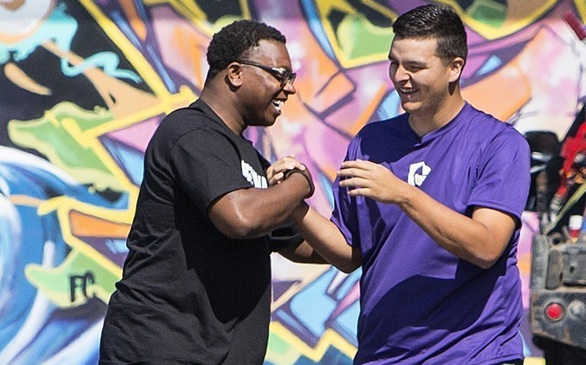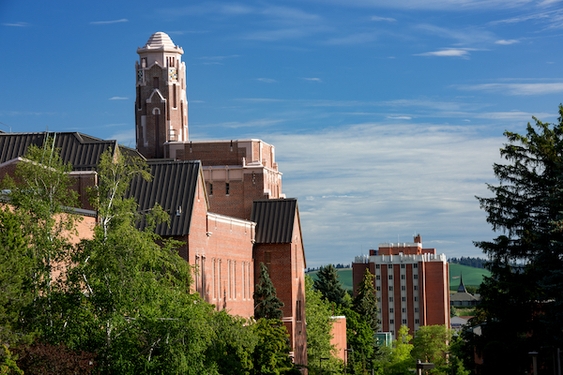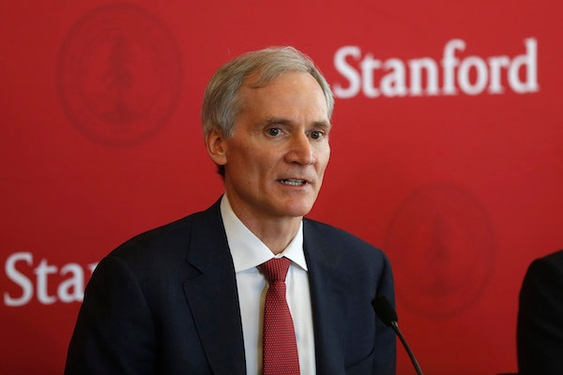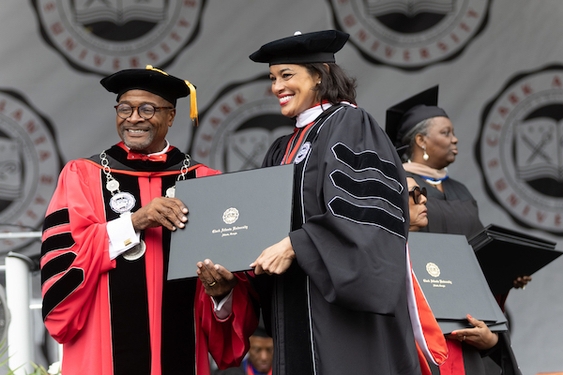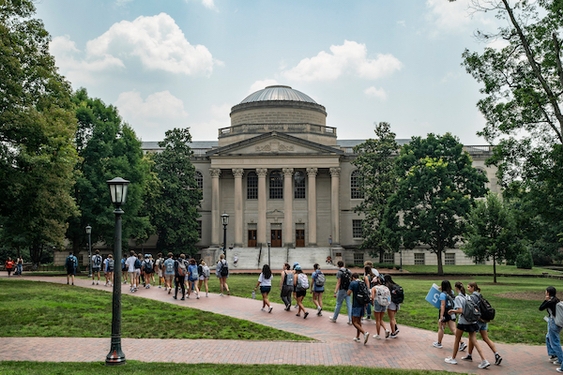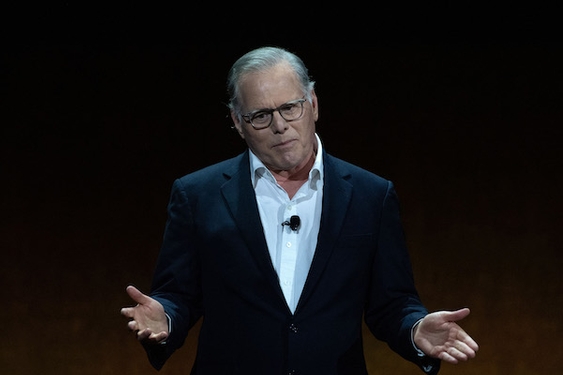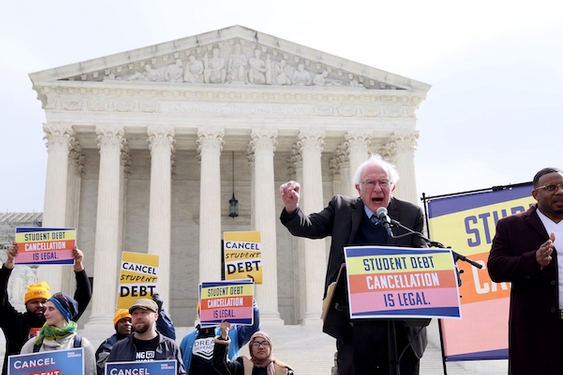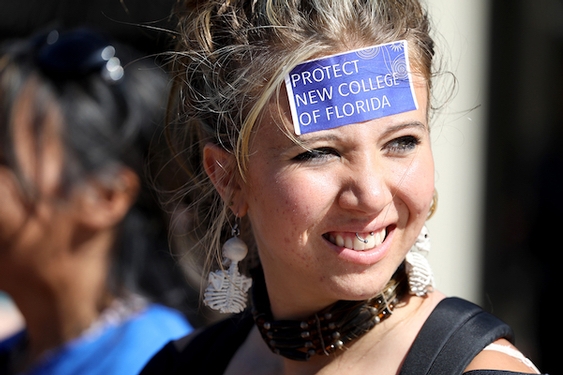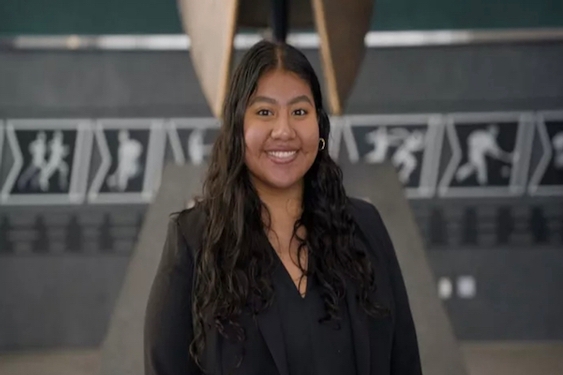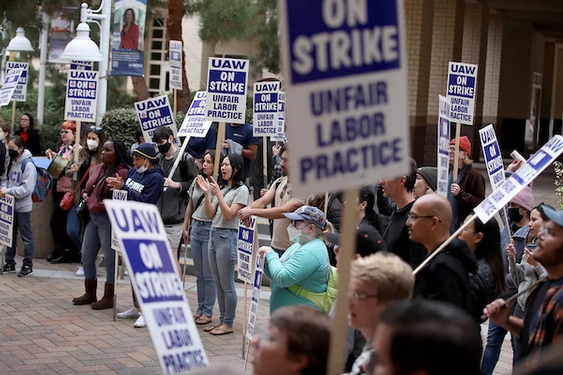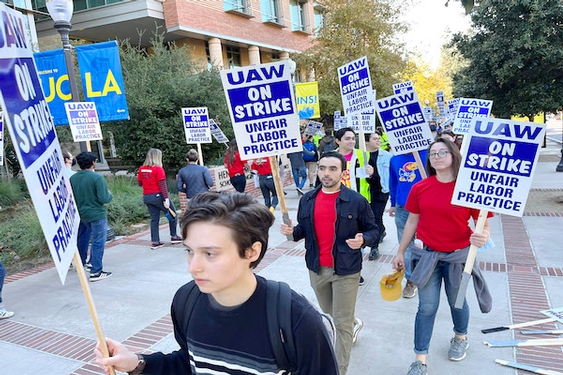OAKLAND, Calif. — In the early mornings while driving his mother to her job cleaning houses, Victor Gomez imagined playing baseball on a college campus. It was 6:30 a.m. in America’s third-most violent city, and he would soon head to class at a high school better known for shootings than scholarship.
Yet against all odds, Victor and several dozen of his classmates will walk onto university campuses next fall, a milestone due not to stellar grades or soaring athletic potential but, instead, the work of another young man hired to create life-changing opportunities where school staff cannot.
Eight hundred miles away, in South Seattle, Maika Bui also might have settled for far less than her abilities warrant, if not for a flier she saw in 5th grade, advertising college preparation. She stuffed it into her backpack and took the paperwork home from Roxhill Elementary School seven years ago.
Low-income students like Maika and Victor, both 18, have been told since childhood that their best shot at economic success is higher education. Yet at both of their high schools, no one on staff has the time or training to guide them through the essential final steps of this journey.
Guidance counselors might like to help. But they are juggling hundreds of students and, moreover, have zero experience navigating the gantlet of deadlines and paperwork that characterizes an ever more complex college-application process.
The resulting bottleneck affects nearly every high school student in the country — and likely contributes to Washington state’s dismal 46th-place rank in college-going rates — but it is particularly acute for low-income kids, many of them unable to hire outside help or turn to parents who have already charted these waters.
Two unusual nonprofits — one national, one unique to Seattle — have stepped into the breach and in the past seven years, through dramatically different approaches, have helped vault thousands of low-income students onto university campuses.
In Seattle, Maika Bui found the Cadillac version. Rainier Scholars identifies promising 5th-graders, all of them minorities, and guides them through two summers, multiple weekends and intermittent afternoons of high-intensity classwork throughout their school years, topping this off with personal college coaching once they hit 11th grade. For free.
The results are stunning: All of Rainier’s graduates — some 200 students to date — have enrolled in selective four-year institutions, including Columbia, Stanford, Dartmouth, Georgetown and Yale.
“We definitely feel that we’re beating the odds,” said Sarah Smith, executive director of the program.
In Oakland, Calif., Victor Gomez got a Kia version, provided by the National College Advising Corps, which sends recent graduates into high-need schools to act both as role models and as guides through a process even the most driven 18-year-olds find overwhelming.
Since its founding in Virginia seven years ago, the Advising Corps has spread to 14 states and improved college-enrollment rates by up to 10 percentage points. Though not yet in Washington, the Pacific Northwest is high on the organization’s agenda.
“They are the third leg holding up the table, and we need the help,” said Angela Tang, a regular school counselor at De Anza High, in Richmond, Calif., where the Advising Corps has been at work for three years.
“I think of the counseling office here as Grand Central Station,” she said. “When there are problems with teachers, the school calls us. Problems with missing homework, with discipline, missing credits — the school calls us. And there was nothing in my training about doing college guidance.”
While well-intentioned, guidance counselors juggle an average caseload of 471 students — in Washington, that figure tops 510; in California, it’s 818-to-1. They are also expected to ensure that each one of these kids graduates, even as they steer depressed students into treatment, pregnant students into doctors’ offices and homeless kids into shelters. Not to mention entering reams of student data, overseeing attendance, proctoring tests and, from time to time, supervising the lunchroom.
Long overlooked, overloaded school counselors have begun to attract interest as a weak rung on the ladder to higher education. Jessica Howell, an economist at the College Board, published a national study last year showing that the addition of just one more counselor at a high school could cut caseloads by half and increase college enrollments by 10 percent.
“The numbers are not pretty — in this state and nationally,” said Mike Hubert, director of Guidance and Counseling at Washington’s Office of the Superintendent of Public Instruction. “We’ve just got to get really better at what we’re doing.”
But Maika Bui cannot wait.
Since kindergarten, her mother, a Vietnamese seamstress, has geared Maika toward a future far beyond the garment factory.
“When youth my age look at a dollar, they probably see a candy bar or a beverage,” Maika wrote in her college application essay. “I see the labor of ten hats.”
She might never have put down those words if not for Rainier Scholars, which guided Maika out of less-distinguished neighborhood schools and into Garfield High’s Accelerated Progress Program, then paid to send her to Exeter Academy in New Hampshire for summer science classes.
This in addition to driving her through 1,500 hours of extra class and homework time, every minute of it geared toward bringing Maika closer to a college diploma.
More than just academic acceleration, Rainier Scholars takes students on a life-altering journey, training them to act as leaders and to speak for themselves.
This was the opportunity Maika grabbed as an 11-year-old, filling out the paperwork with help from her older sister because their parents couldn’t read English well enough to decipher the instructions.
“People always say you can’t expect certain outcomes with certain groups of students, but what they’re really saying is we don’t have the will to put the money toward those groups,” said Smith, who has run Rainier Scholars for the past two years and estimates its total, per-student investment at $50,000.
All of the money comes from grants and private donations.
Rainier kids don’t necessarily begin as academic superstars. Most are B-level pupils with high promise — and high hopes. Of the 500 fifth-graders who apply each year, about 60 are admitted into the program.
“We’re not skimming the top 10 percent — our kids are solidly middle-of-the-road, diamond-in-the-rough types,” Smith said. “This is about work ethic and determination more than test scores.”
The college-coaching portion of the program officially begins junior year, in a sit-down with Director of College Counseling Nicole Danos. A former college admissions officer herself, Danos meets with students during lunch period at their regular schools, firing off a series of brisk introductory questions:
First generation to college? One point in your favor, she’ll say. Overrepresented ethnic minority? Possibly a knock.
Afterward, each student gets a list of eight prospective schools, tailored for his or her grades, test scores, interests and preferred campus size.
Then come “boot camp” weekends to walk through mock interviews and refine application essays.
Danos is a no-nonsense editor, identifying powerful metaphors and tossing the maudlin. “Too preachy,” she wrote on one of Maika’s drafts. “Don’t make the reader feel sorry for you.”
Despite Maika’s status as a top student at Garfield — editor of the school’s literary journal and weekend language tutor in Vietnamese — she had never heard of half the schools Danos proposed. Her regular school counselors didn’t even inquire about college until after she’d already applied.
“Their only objective is to make sure you graduate,” Maika said. “Without Rainier Scholars, I don’t know where I’d be.”
Smith, Danos and most of those working at Rainier Scholars are unapologetic about their social-equity mission, and blunt about the failure of American public education to deliver on its promise.
Nationally, college-going rates for low-income students hover at a stubbornly low 51 percent. But in Washington, it’s far worse. A shocking 18 percent of disadvantaged students here enroll at four-year institutions, even counting academic stars like Maika.
Christopher Avery, a professor of public policy at Harvard University, has been puzzling over such figures for years.
In 2013, he partnered with Caroline Hoxby of Stanford University to study low-income high-achievers — about 30,000 kids each year with the grades and test scores for acceptance into the most selective schools, but who rarely apply because there is no counselor telling them they have a prayer.
“Obviously, these are talented students,” Avery said, “and that they can’t figure out the college application process is a pretty big indictment of the system.”
His paper, “The Missing One-Offs: the Hidden Supply of High-Achieving, Low-Income Students,” suggests that many actually pay more to attend community colleges and state universities than they would with scholarships to Ivy League schools.
“I always viewed education as the engine for social mobility,” Avery said. “But the college transition is a gateway step that may be getting in the way, especially for low-income and minority students. It’s exactly the opposite of the ideal.”
Back in Oakland, Jameil Butler arranges chairs in the ersatz library at Castlemont High — nothing more than a few bookshelves pushed together.
He earns little more than the minimum wage, yet as an adviser with the College Advising Corps, Butler will help send dozens of students onto California campuses in the fall.
Similar to Teach for America, the AmeriCorps- and grant-funded program pays its battalion of twentysomethings about $25,000 a year to act as higher-education navigators in 425 schools across the country.
Many of those they help are the children of immigrants, like Victor Gomez, whose father sold tacos last summer to raise enough money for Victor to fly to Australia, play exhibition baseball and maybe attract the attention of a college scout.
But they’ll take anyone who walks through the door, including kids like Marcus Jackson who — abandoned by his parents and raised by his mother’s ex-boyfriend — struggled with poor grades and might have given up completely were it not for Corps adviser Jennifer Alcaraz.
In her first year at De Anza High, Alcaraz has spent much of her time writing college letters on Marcus’ behalf. So far, the response has been a series of denials. But Marcus, who envisions a career in computer programming, remains undeterred.
“If it’s community college for me, I’ll just transfer from there to a university,” he said.
Alcaraz, 23, took that same path, and she has become a beacon to him — only five years older and from difficult beginnings herself. Finding advisers who look like the students they guide is part of the Corps’ business model.
In Oakland, Butler has challenging cases, too, like Dwight, a senior whose file sits on the top of the to-do pile.
A Chicago Bulls cap pulled low over his eyes, Dwight slumped in Butler’s office, answering every question in monosyllables.
So Butler changed tactics.
“You know, I’m born and raised in Oakland, too, a victim of gun violence myself,” he said abruptly.
Dwight perked up. “You got shot?”
“I did — wrong place, wrong time — in my senior year.”
“You get hurt?” Dwight whispered.
“We can talk about that at a later time. The next steps are to apply to community college and then the scholarship. I do understand the financial barrier is real, but you’ve got people here who will support you.”
As the two began working through a checklist of tasks yet to be done, a teacher barged in.
“None of the computers are working,” she barked.
Butler, 28, is paid by the Corps through a 60-40 arrangement with the University of California at Berkeley, meaning that he is not, officially, part of Castlemont’s staff. This sometimes makes him a target. At $12 an hour, he is the de facto maintenance man, technical-support guru and argument-settler.
But for Victor, the baseball player, Butler’s help through the college maze has been pivotal.
“I didn’t think the advising thing was important,” he said. “But Jameil asked me all these questions — have you registered for the SAT? Have you done FAFSA? Applied for this scholarship? Finished your personal statement? He was all over me. It was pretty helpful, actually.”
In Texas, the Corps has improved college-going rates among Latinos by nearly 5 percentage points after just one year, according to a Stanford University study. In Missouri, it boosted college-going rates by more than 10 percentage points after three years.
And despite intermittent tensions around his presence at Castlemont, Butler has seen 36 of his 56 advisees accepted to college. More responses continue to roll in every day.
“I know some people get mad that ‘They’re here, taking our jobs.’ But I don’t feel that way at all,” said Samantha Odom, a staff counselor at Castlemont. “Jameil’s been great helping students register for the SAT and get fee waivers, knowing what scholarships are out there, keeping track of deadlines. I’m glad for the help.”
Since its founding in 2007, the Advising Corps has mushroomed, and next year it will expand even further — into a total of 500 schools — a move hastened when the White House highlighted the program as a promising national model earlier this year.
“It’s not rocket science, but these really small barriers become huge chasms for students,” said Executive Director Nicole Hurd, “and they can be bridged by an eager 23-year-old.”
Butler is an example of why. Once a prospective college athlete, he lost a kidney — and all hope of a sports scholarship — after being shot in the stomach during his senior year at Oakland Tech (alma mater of Seattle Seahawks star running back Marshawn Lynch).
Butler re-evaluated his goals, turned toward a career in youth leadership and carries his college transcript everywhere, pulling the frayed pink paper from his backpack to show students that the road to higher education need not be smooth to ensure success.
———
High School Education Lab is a yearlong project by The Seattle Times and the Solutions Journalism Network intended to help citizens understand and respond to problems that vex the nation’s public schools.
Times reporters are scrutinizing practices and innovations that are showing results in schools here and around the nation, and we are spotlighting their findings in the project’s Education Lab blog.
We are also teaming up with community and educational groups in a series of public forums aimed at creating a conversation around ways some are meeting the challenges.
The New York-based Solutions Journalism Network is a nonprofit organization whose goal is to legitimize and spread the practice of solutions-oriented journalism. For more information, go to: www.solutionsjournalism.org
——
FUNDING
The project is funded by grants from the Bill & Melinda Gates Foundation and the John S. and James L. Knight Foundation.
———
©2014 The Seattle Times
Visit The Seattle Times at www.seattletimes.com
Distributed by MCT Information Services


